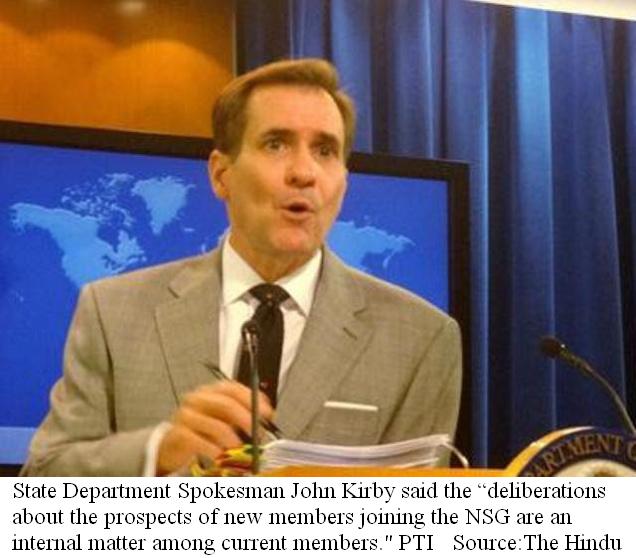|
||||||||
|
|
|
2016-05-17 ArtNo.45733
◆India’s nuclear diplomacy must change
 【London】It is time for the country to break free of its image as a difficult nuclear negotiator and take a pragmatic view of things Last month’s final Nuclear Security Summit in Washington appeared to be another successful attempt by India to present itself as a responsible global player. But President Obama’s unscripted comments at the concluding press conference altered the situation. --Omit-- This is a familiar theme, and one that will recur as India moves towards a place at the top table of global nuclear governance in the coming months. --Omit-- In short, it is time for India to break free of its image as a difficult negotiator. Historically, India’s nuclear negotiations have not always been easy, and have not always won it friends — the rejection of the NPT and the CTBT come to mind. Some might say India’s nuclear diplomacy has been characterised by being vigorously disagreeable. But the India of 2016 is politically, economically and strategically strong enough to make concessions if necessary. Now is the time for New Delhi to be vigorously agreeable. Let’s talk. ○India ready for NSG membership, says U.S.  【Washington】Amid reports that China and Pakistan are jointly opposing India’s bid for the Nuclear Suppliers Group (NSG) membership, the United States has said India meets missile technology control regime requirements and is ready for entry into the exclusive club. “I’d point you back to what the President said during his visit to India in 2015, where he reaffirmed that the U.S. view was that India meets missile technology control regime requirements and is ready for NSG membership,” State Department Spokesman John Kirby said on Friday (13-05-2016). His remarks came in response to a question on reports that China and Pakistan have joined hands to oppose India becoming a member of the NSG. Defending its move to block India’s entry into the NSG, China on Saturday (14-05-2016) claimed that several members of the 48-nation bloc shared its view that signing of the Nuclear Non-Proliferation Treaty (NPT) was an “important” standard for the NSG’s expansion. ○US,Russia,India driving China's nuclear modernisation:Pentagon  【Washington】The defence capabilities possessed by the US, Russia and India are among the main factors driving China to modernise its nuclear force and bolster its strategic strike capabilities. In a report to Congress detailing China's nuclear power, Pentagon yesterday (13-05-2016) said the country was deploying new command, control and communications capabilities to its nuclear forces to improve control of multiple units in the field. China, it said, insists that the new generation of mobile missiles, with warheads consisting of multiple independently targeted re-entry vehicles (MIRVs) and penetration aids, are intended to ensure the viability of its strategic deterrent in the face of continued advances in the US and, to a lesser extent, Russian strategic ISR (Intelligence, surveillance and reconnaissance), precision strike, and missile defence capabilities. "Similarly, India's nuclear force is additional driver behind China's nuclear force modernisation," the Pentagon said in its report. 【News source】 India’s nuclear diplomacy must change U.S. overrides objections of Pakistan and China, says India ready for NSG membership India is ready for NSG membership: US US,Russia,India driving China's nuclear modernisation:Pentagon ○One world: The aim of SEAnews ◆Recruitment of Ad-SEAnews CanvassersYour Comments / UnsubscribeSEAnews MessengerSEAnewsFacebookSEAnewsGoogleSEAnews eBookstoreSEAnews eBookstore(GoogleJ)SEAnews world circulation |
|
[Your Comments / Unsubscribe]/[您的意见/退订]/[ご意見/配信停止]
Please do not directly reply to the e-mail address which is used for delivering the newsletter. 请别用递送新闻的邮件地址而直接回信。 メールをお届けした送信専用アドレスには返信しないで下さい。 |